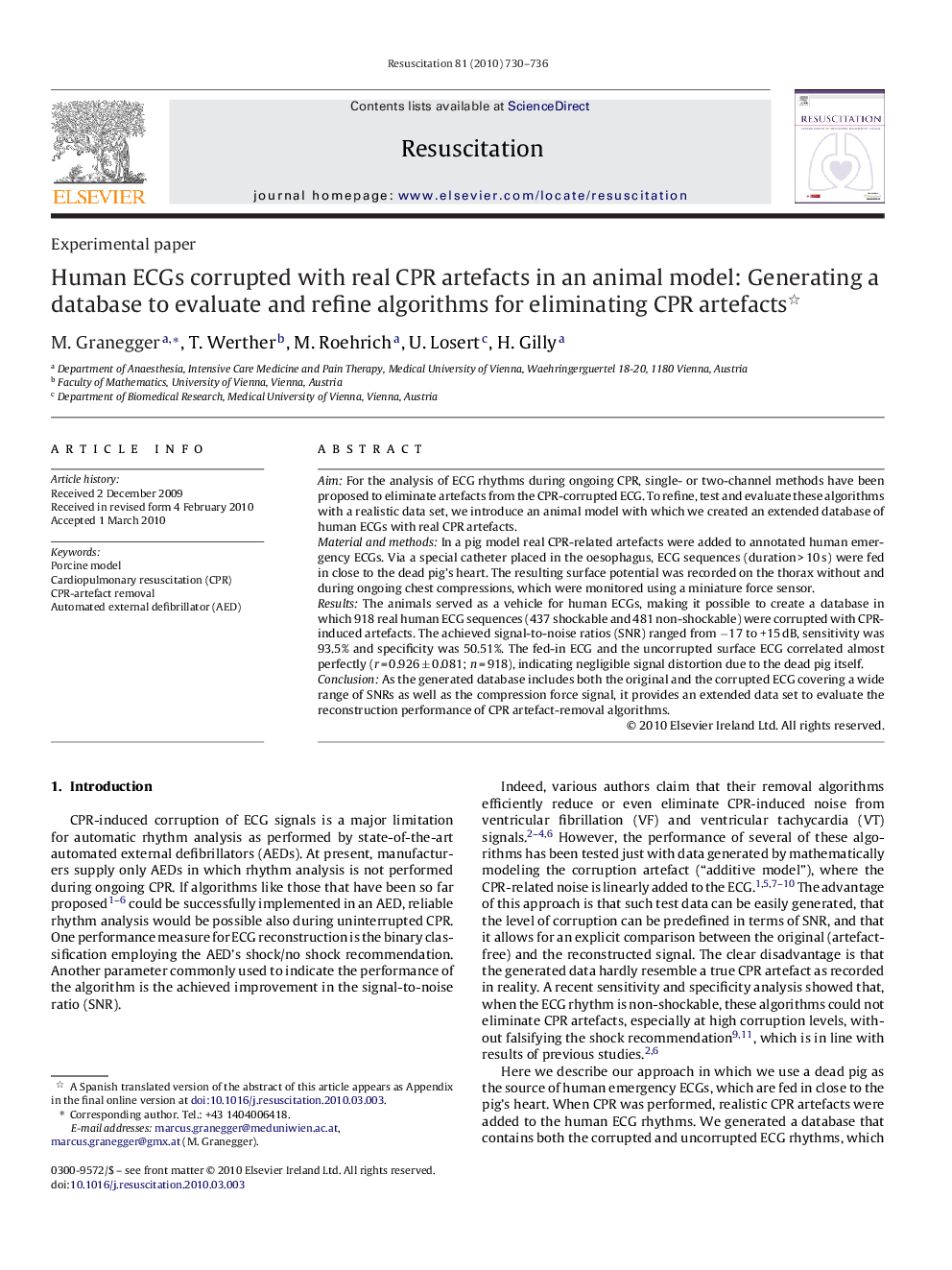| Article ID | Journal | Published Year | Pages | File Type |
|---|---|---|---|---|
| 3009896 | Resuscitation | 2010 | 7 Pages |
AimFor the analysis of ECG rhythms during ongoing CPR, single- or two-channel methods have been proposed to eliminate artefacts from the CPR-corrupted ECG. To refine, test and evaluate these algorithms with a realistic data set, we introduce an animal model with which we created an extended database of human ECGs with real CPR artefacts.Material and methodsIn a pig model real CPR-related artefacts were added to annotated human emergency ECGs. Via a special catheter placed in the oesophagus, ECG sequences (duration > 10 s) were fed in close to the dead pig's heart. The resulting surface potential was recorded on the thorax without and during ongoing chest compressions, which were monitored using a miniature force sensor.ResultsThe animals served as a vehicle for human ECGs, making it possible to create a database in which 918 real human ECG sequences (437 shockable and 481 non-shockable) were corrupted with CPR-induced artefacts. The achieved signal-to-noise ratios (SNR) ranged from −17 to +15 dB, sensitivity was 93.5% and specificity was 50.51%. The fed-in ECG and the uncorrupted surface ECG correlated almost perfectly (r = 0.926 ± 0.081; n = 918), indicating negligible signal distortion due to the dead pig itself.ConclusionAs the generated database includes both the original and the corrupted ECG covering a wide range of SNRs as well as the compression force signal, it provides an extended data set to evaluate the reconstruction performance of CPR artefact-removal algorithms.
